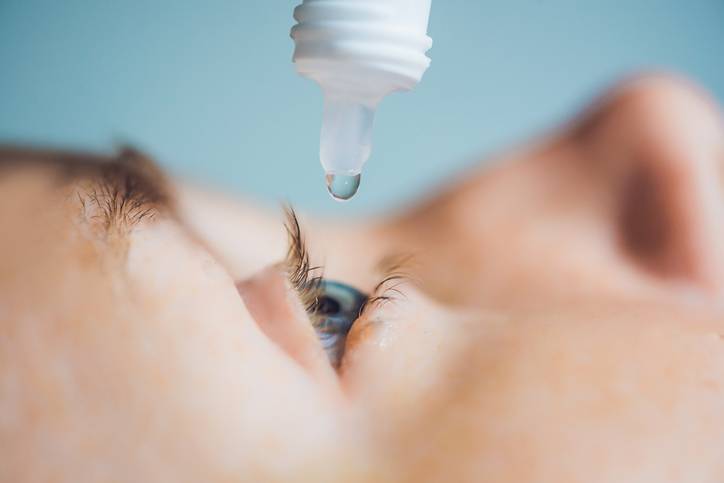SUBSCRIBE AND SAVE! | SIGN ME UP!

Written by MacuHealth
Reviewed by Jim Stringham, Ph.D.
The lights seem a little brighter than usual. You squint for minutes until your focus readjusts, but you can’t shake the feeling that there’s something in your eyes. They feel gritty and rough as you constantly rub them. They feel itchy around your sockets, and your eyeballs are so sore and inflamed that your vision becomes blurred.
The above paragraph describes what it’s like living with dry eye. This frustrating, and many times, chronic condition affects nearly 16 million Americans, particularly older adults. The ocular irritation may be relieved with a bottle of eye drops, but the ingredients in some of these products exacerbate symptoms. What are some ways you can combat dry eye? We’ll share what causes it, who’s at risk and some methods to treat it.
Dealing with the symptoms of dry eye is enough to make you cry. But according to the American Optometric Association, the condition is caused by a lack of tears. Moisture spreads across the eye’s surface, lubricating and protecting them from foreign objects and infection. As we age, tear production and drainage through the tear ducts become imbalanced. The glands in and around the eyelids produce fewer tears or make lower-quality droplets that evaporate quickly, causing them to spread unevenly around the eye.
Tear production can decrease for several reasons. In addition to aging, hormonal changes caused by pregnancy and menopause cause more women to experience dry eye symptoms. Inflammation can develop because of other medical conditions, including rheumatoid arthritis, diabetes and thyroid issues. Antihistamines, decongestants, antidepressants and blood pressure medications can also lead to fewer tears.
Environmental conditions have also caused symptoms to rise in younger people. Smoking and dry climates can intensify dry eye symptoms. So can an increase in your screen time. When looking at electronic devices for an extended amount of time, our eyes blink less, which leads to a decrease in tear production.
Here are some simple ways to prevent dry eye symptoms:
Inflammation is at the root of dry eye. Unfortunately, there is no cure. But there are a variety of treatments that can manage symptoms. Most people turn to over-the-counter eye drops. However, using them can make symptoms worse. Some prescriptions control some of the underlying causes of dry eye. There are also invasive procedures to help increase tear production or close the ducts to reduce tear loss.
Another way to soothe inflammation is by supplementing with Omega-3s. In addition to improving brain and heart health, an American Academy of Ophthalmology study shows consuming fish oil through seafood or supplements reduces dry eye symptoms. It also significantly lowers the risk of developing other retinal diseases like age-related macular degeneration (AMD).
Yet many people are hesitant to go on a fish oil regimen because of the low-quality ingredients that cause odd-smelling “fishy burps.” The formula for the supplement TG Omega-3 by MacuHealth uses oils from small, traceable open-water fish refined to the highest purity and quality. This ensures optimum health without undesirable fish burps.